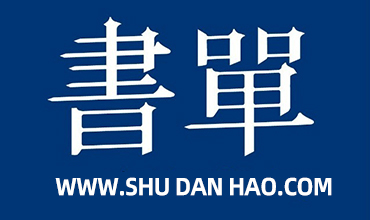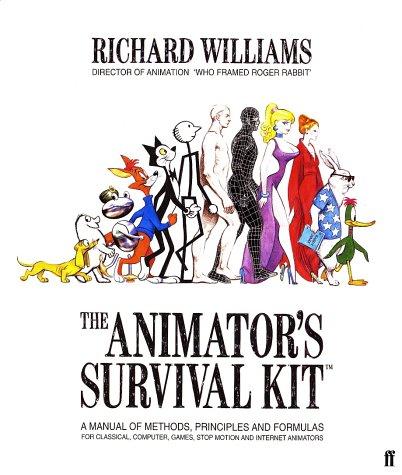
Daniel J·Barrett《SSH, The Secure Shell》
书刊介绍
内容简介
Are you serious about network security? Then check out SSH, the Secure Shell, which provides key-based authentication and transparent encryption for your network connections. It's reliable, robust, and reasonably easy to use, and both free and commercial implementations are widely available for most operating systems. While it doesn't solve every privacy and security problem, SSH eliminates several of them very effectively. Everything you want to know about SSH is in our second edition of SSH, The Secure Shell: The Definitive Guide. This updated book thoroughly covers the latest SSH-2 protocol for system administrators and end users interested in using this increasingly popular TCP/IP-based solution. How does it work? Whenever data is sent to the network, SSH automatically encrypts it. When data reaches its intended recipient, SSH decrypts it. The result is "transparent" encryption-users can work normally, unaware that their communications are already encrypted. SSH supports secure file transfer between computers, secure remote logins, and a unique "tunneling" capability that adds encryption to otherwise insecure network applications. With SSH, users can freely navigate the Internet, and system administrators can secure their networks or perform remote administration. Written for a wide, technical audience, SSH, The Secure Shell: The Definitive Guide covers several implementations of SSH for different operating systems and computing environments. Whether you're an individual running Linux machines at home, a corporate network administrator with thousands of users, or a PC/Mac owner who just wants a secure way to telnet or transfer files between machines, our indispensable guide has you covered. It starts with simple installation and use of SSH, and works its way to in-depth case studies on large, sensitive computer networks. No matter where or how you're shipping information, SSH, The Secure Shell: The Definitive Guide will show you how to do it securely.
作品目录
Chapter 1 Introduction to SSH
What Is SSH?
What SSH Is Not
The SSH Protocol
Overview of SSH Features
History of SSH
Related Technologies
Summary
Chapter 2 Basic Client Use
A Running Example
Remote Terminal Sessions with ssh
Adding Complexity to the Example
Authentication by Cryptographic Key
The SSH Agent
Connecting Without a Password or Passphrase
Miscellaneous Clients
Summary
Chapter 3 Inside SSH
Overview of Features
A Cryptography Primer
The Architecture of an SSH System
Inside SSH-2
Inside SSH-1
Implementation Issues
SSH and File Transfers (scp and sftp)
Algorithms Used by SSH
Threats SSH Can Counter
Threats SSH Doesn't Prevent
Threats Caused by SSH
Summary
Chapter 4 Installation and Compile-Time Configuration
Overview
Installing OpenSSH
Installing Tectia
Software Inventory
Replacing r-Commands with SSH
Summary
Chapter 5 Serverwide Configuration
Running the Server
Server Configuration: An Overview
Getting Ready: Initial Setup
Authentication: Verifying Identities
Access Control: Letting People In
User Logins and Accounts
Forwarding
Subsystems
Logging and Debugging
Compatibility Between SSH-1 and SSH-2 Servers
Summary
Chapter 6 Key Management and Agents
What Is an Identity?
Creating an Identity
SSH Agents
Multiple Identities
PGP Authentication in Tectia
Tectia External Keys
Summary
Chapter 7 Advanced Client Use
How to Configure Clients
Precedence
Introduction to Verbose Mode
Client Configuration in Depth
Secure Copy with scp
Secure, Interactive Copy with sftp
Summary
Chapter 8 Per-Account Server Configuration
Limits of This Technique
Public-Key-Based Configuration
Hostbased Access Control
The User rc File
Summary
Chapter 9 Port Forwarding and X Forwarding
What Is Forwarding?
Port Forwarding
Dynamic Port Forwarding
X Forwarding
Forwarding Security: TCP-Wrappers and libwrap
Summary
Chapter 10 A Recommended Setup
The Basics
Compile-Time Configuration
Serverwide Configuration
Per-Account Configuration
Key Management
Client Configuration
Remote Home Directories (NFS, AFS)
Summary
Chapter 11 Case Studies
Unattended SSH: Batch or cron Jobs
FTP and SSH
Pine, IMAP, and SSH
Connecting Through a Gateway Host
Scalable Authentication for SSH
Tectia Extensions to Server Configuration Files
Tectia Plugins
Chapter 12 Troubleshooting and FAQ
Debug Messages: Your First Line of Defense
Problems and Solutions
Other SSH Resources
Chapter 13 Overview of Other Implementations
Common Features
Covered Products
Other SSH Products
Chapter 14 OpenSSH for Windows
Installation
Using the SSH Clients
Setting Up the SSH Server
Public-Key Authentication
Troubleshooting
Summary
Chapter 15 OpenSSH for Macintosh
Using the SSH Clients
Using the OpenSSH Server
Chapter 16 Tectia for Windows
Obtaining and Installing
Basic Client Use
Key Management
Accession Lite
Advanced Client Use
Port Forwarding
Connector
File Transfers
Command-Line Programs
Troubleshooting
Server
Chapter 17 SecureCRT and SecureFX for Windows
Obtaining and Installing
Basic Client Use
Key Management
Advanced Client Use
Forwarding
Command-Line Client Programs
File Transfer
Troubleshooting
VShell
Summary
Chapter 18 PuTTY for Windows
Obtaining and Installing
Basic Client Use
File Transfer
Key Management
Advanced Client Use
Forwarding
Summary
Appendix
Colophon
相关推荐
-

计算机操作系统原理与应用 : 高等学校计算机专业教材精选·计算机原理
计算机操作系统原理与应用 : 高等学校计算机专业教材精选·计算机原理 本书特色 《计算机操作系统原理与应用》是我们参考了国内外有关OS的论著和技术资料,并结合多...
-

基于深度学习的自然语言处理
《基于深度学习的自然语言处理》内容简介:将深度学习方法应用于各种自然语言处理任务,可以让你的算法在速度和准确性方面提升到一
-
![[英] 克拉夫特《CSS实战精粹》](http://oss.shudanhao.com/caiji/chazidian/2023/1724.jpg)
[英] 克拉夫特《CSS实战精粹》
《CSS实战精粹》囊括了CSS工作原理的所有细节,主要介绍了能够在项目中使用的具体CSS设计技巧,包括CSS布局、创建一般页面元素以
-
![[美] Dmitri Sotnikov《Clojure Web开发实战》](http://oss.shudanhao.com/caiji/chazidian/2023/1575.jpg)
[美] Dmitri Sotnikov《Clojure Web开发实战》
Clojure是一门Lisp方言。它通过函数式编程技术,直接支持并发软件开发,得到众多开发人员的欢迎,广泛应用于各个领域。Web开发是
-

John Madrigal Wise《Exploring Technology and Social Space》
Thisvolumeoffersacritical,philosophicalandepistemologicalframeworktounderstandbe...
-

高永强《Java编程艺术》
《Java编程艺术》共分5个部分。第1部分为新手上路篇,介绍Java编程基础和环境。第2部分为深入篇,将带领你走进Java面向对象编程大
-

深入理解分布式事务
《深入理解分布式事务》内容简介:本书的广度与深度兼备、理论与实战兼顾的分布式事务专著,它从基础知识、解决方案、原理分析、源
-

工业软实力
《工业软实力》内容简介:本书由工业和信息化部政策法规司组织国家工业信息安全发展研究中心、中国信息通信研究院、中国电子信息产
-

绿色诊断理论与实践
《绿色诊断理论与实践》内容简介:本书根据绿色诊断的理论方法和企业绿色诊断的实践,对绿色诊断标准和法律法规体系、绿色诊断主要
-

非线性随机时滞神经网络-稳定性分析与脉冲镇定
非线性随机时滞神经网络-稳定性分析与脉冲镇定 本书特色 本专著的内容是研究非线性*时滞神经网络系统的稳定与脉冲镇定.这些系统包括脉冲*泛函系统,*递归时滞神经网...
-

HINE CHRISTINE《Ethnography for the Internet》
Theinternethasbecomeembeddedintoourdailylives,nolongeranesotericphenomenon,butin...
-

Benjamin C·Pierce《Advanced Topics in Types and Programming Languages》
Thestudyoftypesystemsforprogramminglanguagesnowtouchesmanyareasofcomputerscience...
-

电脑维修与技巧888问
电脑维修与技巧888问 内容简介 电脑已经成为人们生活中不可缺少的一部分。虽然大家都在使用电脑,但不是每个人都能够使用得得心应手,当电脑出故障时,许多人就束手无...
-

成国祥|姚康德《智能材料》
智能材料是一种能感知外部刺激,能够判断并适当处理且本身可执行的新型功能材料。智能材料与智能结构有着巨大的潜在的应用前景,
-

克里斯·杰弗莉《服装缝制图解大全》
主要撰稿人克里斯・杰弗莉(ChrisJefferys)是《服装缝制图解大全》一书的主要撰稿人和组织者。多年从事缝纫和刺绣教学,后成为《
-

全国计算机等级考试二级教程:公共基础知识(2008年版)
全国计算机等级考试二级教程:公共基础知识(2008年版) 内容简介 本书是根据教育部考试中心*新颁布的《全国计算机等级考试二级公共基础知识考试大纲(2007年版...
-

从大数据到智能制造
《从大数据到智能制造》内容简介:工业4.0已上升为德国的民族战略;日本软银集团创始人孙正义试图以机器人作为工业4.0的切入点;英
-

守正创新 铸魂育人
《守正创新 铸魂育人》内容简介:中国式现代化是物质文明和精神文明相协调的现代化。物质富足、精神富有是社会主义现代化的根本要求
-

《Understanding and Deploying LDAP Directory Services》书籍《Understanding and Deploying LDAP Directory Services》
LightweightDirectoryAccessProtocol(LDAP)isthestandardfordirectoryinformationacce...
-

行成于思:王志纲中国走势思考录
《行成于思:王志纲中国走势思考录》内容简介:“行成于思毁于随”。从进入中南海汇报的新华社资深记者,转变为顶尖战略咨询机构智





